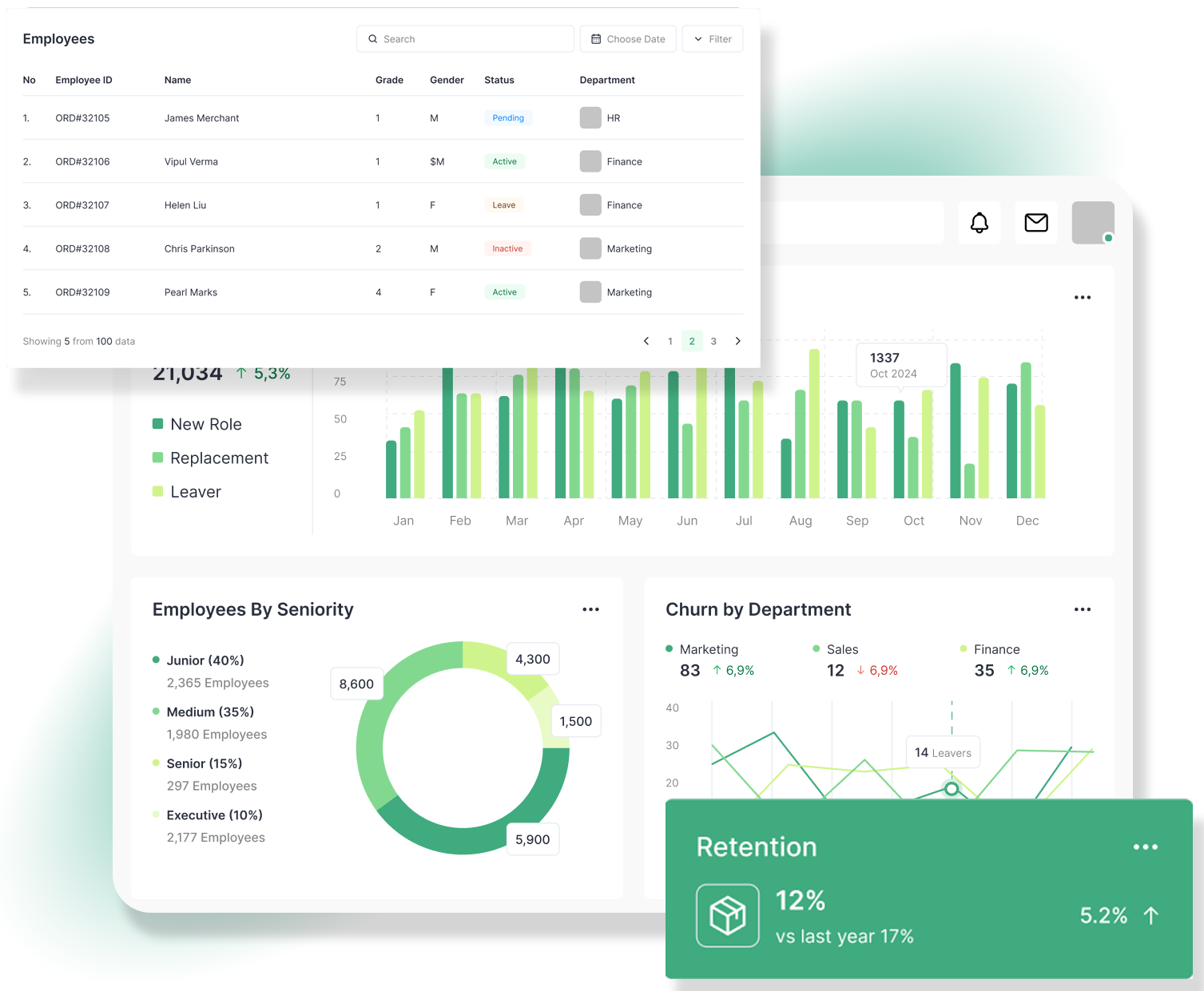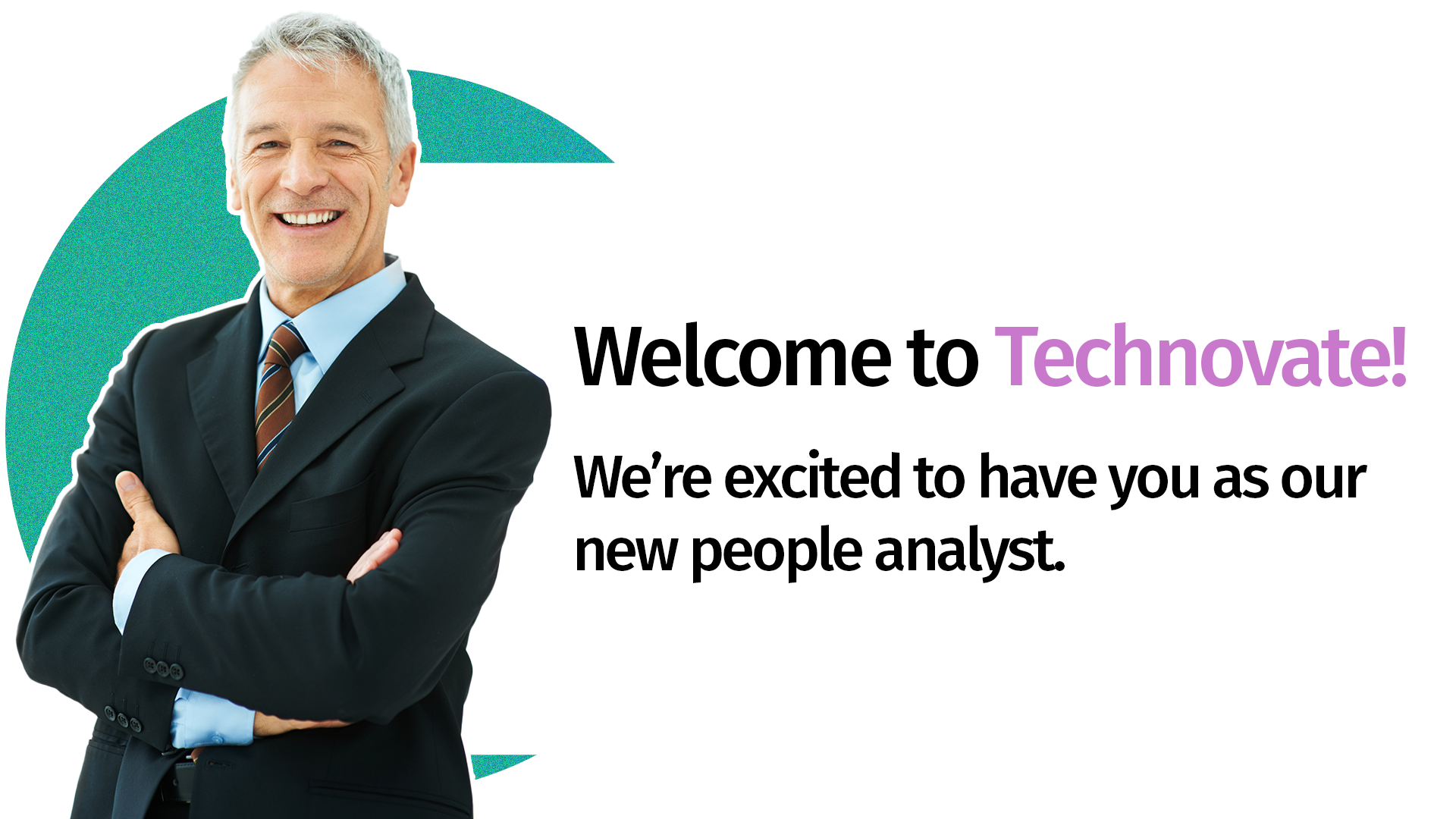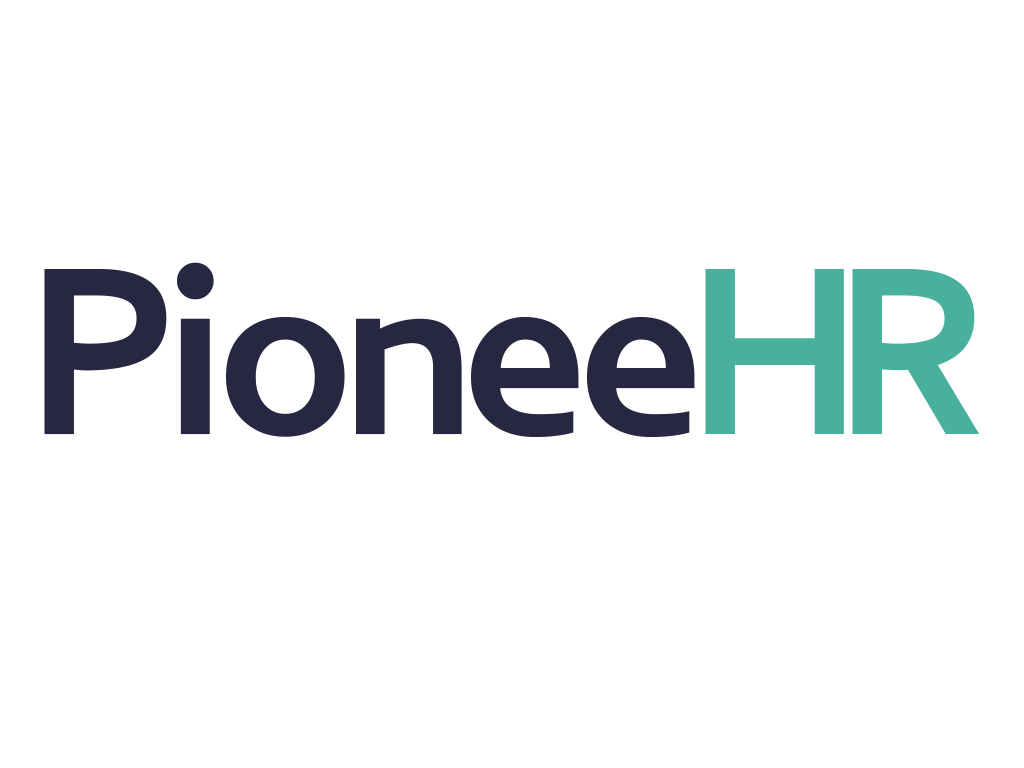People Analytics Certification Course


Transform Data into Strategic HR Insights


Here is what we will cover in
this course
Excel Dashboards
Data Cleaning and Preparation
Predictive Analytics
Employee Performance Analysis
Power BI Dashboards
HR Metrics and KPIs
Experience the Future of Learning with Our Job Simulation Approach
02
Cross-Departmental Collaboration:
Your Path to HR Analytics Certification
Step 1: Enroll and Get Welcomed

Step 2: Receive Weekly Emails from Colleagues Assigning Tasks

Step 3: Work on the Tasks and Learn

Take a look inside the People Analytics Course
Week 1: Onboarding and Introduction
- Welcome email and introduction to the simulated company.
- Access course materials and platform navigation.
- Complete introductory module on the basics of People Analytics.
Week 2: Initial Company Analysis
- Analyze the total staff by department and roles.
- Introduction to basic HR metrics.
- Weekly task: Create an initial company overview report.
Week 3: Recruitment Metrics
- Understand and analyze recruitment metrics such as time-to-hire and cost-per-hire.
- Evaluate applicant conversion rates.
- Weekly task: Develop recruitment metrics reports.
Week 4: Recruitment Strategy Analysis
- Review and improve recruitment strategies based on data.
- Implement sourcing and selection optimization.
- Weekly task: Propose data-driven recruitment strategy improvements.
Week 5: Turnover and Churn Analysis
- Analyze employee turnover rates and identify patterns.
- Evaluate reasons for employee departures using exit data.
- Weekly task: Create a turnover analysis report with recommendations.
Week 6: Retention Strategies
- Develop strategies to improve employee retention.
- Monitor and analyze retention initiatives.
- Weekly task: Propose a retention strategy plan.
Week 7: Performance Metrics
- Measure and analyze employee performance data.
- Develop key performance indicators (KPIs) for various roles.
- Weekly task: Create a performance metrics dashboard.
Week 8: Performance Improvement Plans
- Design and implement performance improvement plans.
- Use data to provide constructive feedback.
- Weekly task: Develop a performance improvement plan for a specific case.
Week 9: Employee Engagement Analysis
- Conduct and analyze employee engagement surveys.
- Identify factors affecting engagement and satisfaction.
- Weekly task: Create an employee engagement report.
Week 10: Engagement Strategies
- Develop strategies to enhance employee engagement.
- Implement engagement initiatives and measure their impact.
- Weekly task: Propose an employee engagement strategy.
Week 11: Diversity, Equity, and Inclusion (DEI) Metrics
- Understand and analyze DEI metrics.
- Assess workforce diversity and identify gaps.
- Weekly task: Create a DEI analysis report.
Week 12: DEI Initiatives
- Develop and implement DEI initiatives based on data insights.
- Monitor and evaluate the impact of DEI programs.
- Weekly task: Propose DEI initiatives for the organization.
Week 13: Learning and Development (L&D) Metrics
- Measure the effectiveness of training programs.
- Identify skill gaps and training needs.
- Weekly task: Develop an L&D metrics report.
Week 14: L&D Strategies
- Design and implement learning and development strategies.
- Evaluate the impact of L&D programs on performance.
- Weekly task: Propose an L&D strategy.
Week 15: Compensation and Benefits Analysis
- Analyze compensation and benefits data.
- Evaluate the effectiveness of benefits packages.
- Weekly task: Create a compensation and benefits report.
Week 16: Compensation Strategy
- Develop data-driven compensation strategies.
- Ensure pay equity and fairness.
- Weekly task: Propose a compensation strategy plan.
Week 17: Workforce Planning and Forecasting
- Techniques for effective workforce planning.
- Forecasting future workforce needs.
- Weekly task: Create a workforce planning model.
Week 18: Power BI Introduction
Week 19: Advanced Power BI Techniques
- Learn advanced features in Power BI (e.g., DAX, data modeling).
- Create interactive dashboards.
- Weekly task: Develop a comprehensive Power BI dashboard for HR metrics
Week 20: Final Project Presentation
- Complete the final project integrating all learned concepts.
- Present findings and recommendations.
This Course is Right for You if you are a...

Get Certified as a People Analyst
Highlights
Optimize Your Recruitment Processes
Learn to track and analyze recruitment metrics such as time-to-hire, cost-per-hire, and applicant conversion rates. Understand how to optimize your recruitment processes and make data-driven decisions to attract and retain top talent.
Highlights
Foster an Inclusive Workplace
Discover how to measure and improve diversity, equity, and inclusion within your organization. Learn to analyze workforce demographics, identify gaps, and implement strategies to foster a more inclusive workplace.
Highlights
Enhance Workplace Satisfaction
Understand how to measure employee engagement through surveys and other metrics. Learn to analyze engagement data to identify areas of improvement, boost morale, and enhance overall workplace satisfaction.
Highlights
Improve Employee Productivity
Gain insights into tracking and analyzing employee performance metrics. Learn to create performance dashboards, conduct performance reviews, and implement strategies to improve employee productivity and development.
Highlights
Ensure Fair and Competitive Pay Structures
Explore how to analyze compensation and benefits data to ensure competitive and fair pay structures. Learn to use data to inform compensation strategies, benefits offerings, and overall employee satisfaction.
Highlights
Enhance Employee Skills and Growth
Learn to measure the effectiveness of training programs and employee development initiatives. Understand how to track learning outcomes, identify skill gaps, and create impactful L&D strategies.
Highlights
Reduce Turnover and Improve Retention
Analyze employee retention and turnover rates to identify patterns and underlying causes. Learn to develop strategies to improve retention, reduce turnover, and enhance employee loyalty.
Highlights
Visualize Key HR Metrics
Master the creation of comprehensive HR dashboards using tools like Excel and Power BI. Learn to visualize key HR metrics and present data in an engaging and easily digestible format for stakeholders.
Next Cohort Opens in...

-
60-Day Satisfaction Guarantee
At PinoeeHR, we are committed to your success and satisfaction. We are confident in the quality and value of our People Analytics course, and we want you to feel the same. That’s why we offer a comprehensive 60-day satisfaction guarantee. -
Risk-Free Enrollment: Enroll in our course with confidence, knowing that you have a full 60 days to experience our unique approach and comprehensive content.
-
Full Access: Gain complete access to all course materials, including lectures, real-world simulations, hands-on exercises, and job-ready templates.
-
No Questions Asked: If for any reason you are not satisfied with the course, simply reach out to us within 60 days of your enrollment, and we will provide a full refund—no questions asked.

